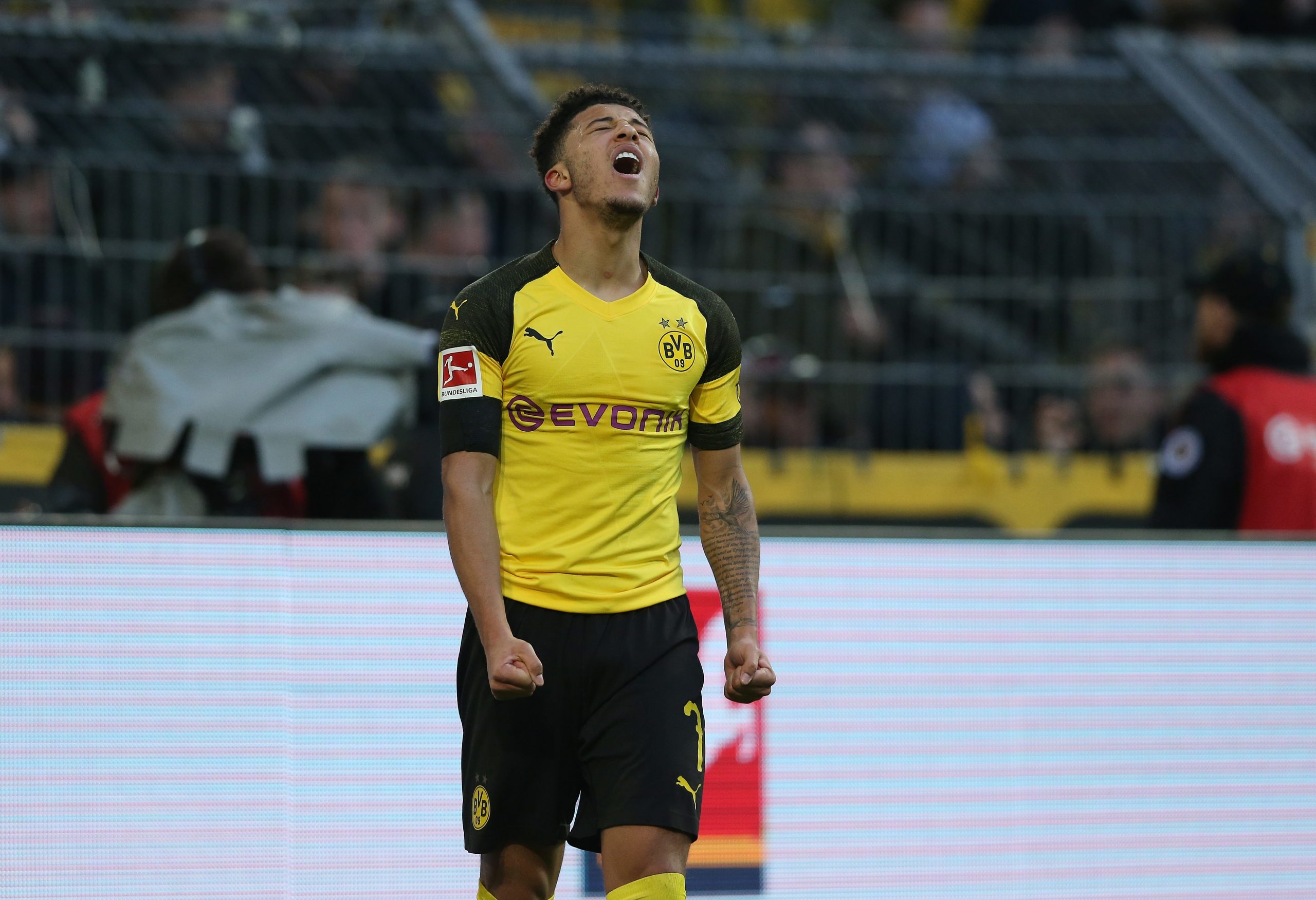When Louis Lancaster first set eyes on Jadon Sancho, he knew he had been given a special talent to work with. Sancho had just been promoted a year above his age group into Lancaster’s Watford Under-15 side, and it quickly became clear that he was more than ready for the challenge. The focus shifted on to how to make the most of his obvious ability. “There are a lot of players who play the game of football but don’t actually contribute,” Lancaster, recently named the new head coach of the Taiwan national team, told StatsBomb. “We sat down and thought: how can you contribute? It’s easy with a player of his qualities: it’s goals, assists, and playing forwards. There are two types of possession. There is possession for possession’s sake, which I get, sometimes you need it, but there is also a style of possession that can hurt the opposition, where you’re breaking lines and eliminating players from the game. That was what we stuck to: score, create, purposeful possession.” It was a lesson that Sancho quite clearly took on board. At just 18 years old, he is already one of the key attacking contributors to the Borussia Dortmund side that currently leads the way in the Bundesliga. He has provided a goal or assist for every 90 minutes he’s been on the pitch, and he leads the team in successful dribbles and passes into the area per 90.  It is an impressively well-rounded contribution, but it is all built around his outstanding ball control and dribbling ability. Lancaster has a theory he picked up from a table tennis coach about the best performers in that sport. He was told that the top 200 in the world is filled with players who are seven out of 10 across the board, but that it is only those who have at least one outstanding attribute, even if they are slightly below average in other areas, who populate the top 10. The rest of their game coalesces around that quality. It feels that way with Sancho. With 4.17 successful dribbles per 90, he ranks in the top 10 among players in the big-five leagues with more than 500 minutes of action to their name this season. Defenders find it very hard to prevent him making progress. “Players can either move the ball, which is what most do, or move their body,” Lancaster explained. “With him, it was completely unorthodox. I’ve never seen a player do that. The way he can drop his shoulder, the disguise he has. When someone else drops a shoulder, you can kind of read it, the patterns of the body. As a defender you say, ‘I’ve come up against this pattern before.’ But with Jadon, it’s completely unique. It would have been the first time a defender had ever seen this sort of movement. He lifts his leg one way, he moves his hip another way, he drops his shoulder another way. He’s just free-flowing.”
It is an impressively well-rounded contribution, but it is all built around his outstanding ball control and dribbling ability. Lancaster has a theory he picked up from a table tennis coach about the best performers in that sport. He was told that the top 200 in the world is filled with players who are seven out of 10 across the board, but that it is only those who have at least one outstanding attribute, even if they are slightly below average in other areas, who populate the top 10. The rest of their game coalesces around that quality. It feels that way with Sancho. With 4.17 successful dribbles per 90, he ranks in the top 10 among players in the big-five leagues with more than 500 minutes of action to their name this season. Defenders find it very hard to prevent him making progress. “Players can either move the ball, which is what most do, or move their body,” Lancaster explained. “With him, it was completely unorthodox. I’ve never seen a player do that. The way he can drop his shoulder, the disguise he has. When someone else drops a shoulder, you can kind of read it, the patterns of the body. As a defender you say, ‘I’ve come up against this pattern before.’ But with Jadon, it’s completely unique. It would have been the first time a defender had ever seen this sort of movement. He lifts his leg one way, he moves his hip another way, he drops his shoulder another way. He’s just free-flowing.” 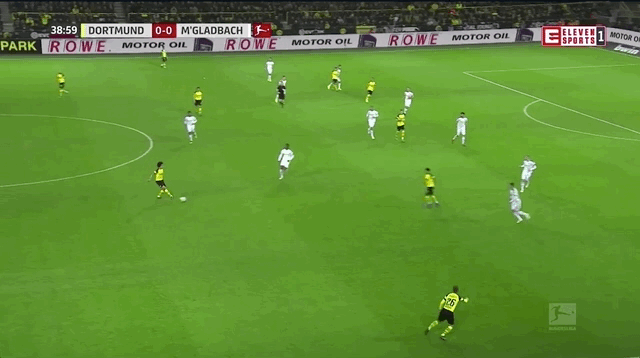 Bundesliga defenders have regularly found the most the effective method of stopping him is to bring him down. While his 1.68 drawn fouls per 90 minutes is fairly average for a player in his position, some opponents have been much more aggressive. He was fouled four times in his 65 minutes on the pitch against Eintracht Frankfurt last weekend. “He keeps it close,” Lancaster continued. “For instance, in some one-on-one situations, if you actually just take a picture of the situation, how do you actually know who is defending? Because the distance from my foot and your foot to the ball could be the same. Whereas his foot is so close to the ball, is he actually making a decision for himself in his head when he goes past you or is he waiting for you to make his decision for him? His foot is so close to the ball, if you come for it, he’s now gone because he can move the ball instantaneously.” That Sancho keeps the ball close and well-protected also helps in a manner not fully captured by the data. As a child, playing in the enclosed areas of his South East London estate, against opponents older and younger, he refined the ability to make himself just enough space to get off his shot, pass or cross. That is still how he plays. One of his former England youth coaches once described him as the country’s answer to Neymar, but there is something in his shuffling strides, in the poise and pause in his game, in its innate efficiency, that is more reminiscent of Luis Figo.
Bundesliga defenders have regularly found the most the effective method of stopping him is to bring him down. While his 1.68 drawn fouls per 90 minutes is fairly average for a player in his position, some opponents have been much more aggressive. He was fouled four times in his 65 minutes on the pitch against Eintracht Frankfurt last weekend. “He keeps it close,” Lancaster continued. “For instance, in some one-on-one situations, if you actually just take a picture of the situation, how do you actually know who is defending? Because the distance from my foot and your foot to the ball could be the same. Whereas his foot is so close to the ball, is he actually making a decision for himself in his head when he goes past you or is he waiting for you to make his decision for him? His foot is so close to the ball, if you come for it, he’s now gone because he can move the ball instantaneously.” That Sancho keeps the ball close and well-protected also helps in a manner not fully captured by the data. As a child, playing in the enclosed areas of his South East London estate, against opponents older and younger, he refined the ability to make himself just enough space to get off his shot, pass or cross. That is still how he plays. One of his former England youth coaches once described him as the country’s answer to Neymar, but there is something in his shuffling strides, in the poise and pause in his game, in its innate efficiency, that is more reminiscent of Luis Figo. 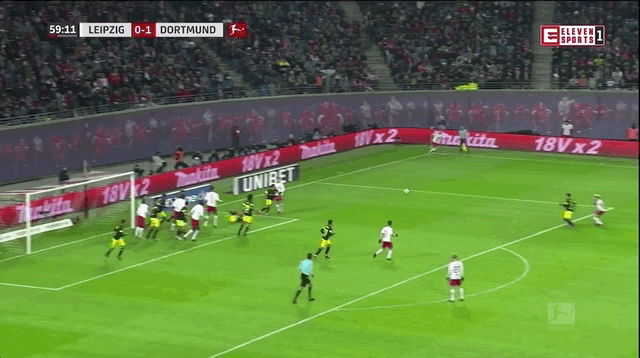 His ability to take players on isn’t something Sancho only utilizes in attacking areas. It is also a valuable tool for Dortmund in progressing the ball forward in transition. As this dribble map below shows, he quite often first picks up possession in deeper areas and helps move things upfield. That doesn’t even count the times when players back off him, giving him space to carry the ball uncontested.
His ability to take players on isn’t something Sancho only utilizes in attacking areas. It is also a valuable tool for Dortmund in progressing the ball forward in transition. As this dribble map below shows, he quite often first picks up possession in deeper areas and helps move things upfield. That doesn’t even count the times when players back off him, giving him space to carry the ball uncontested. “Players on the ball have two options,” Lancaster said. “They have the soft option and the hard option. We always try and encourage players to get the ball and face the player up. So, you might receive it so you are facing the defender immediately, which is great, you can go one-on-one. Or if your back is towards the defender, sometimes people just take the soft option and pass it back. Jadon wasn’t happy with that. It was turn and go at this player... If he did turn, and he did attack, that was helping us defensively. He’s now progressed the ball 20 yards up the pitch. If he loses it 20 yards up the pitch, we’re 20 yards further from our goal. So it was all complementary in transitional phases.” There is a recurring pattern in Dortmund’s transitions involving Sancho where he receives the ball, takes on and beats his initial marker and then seeks to initiate a one-two with a teammate to advance forward and infield.
“Players on the ball have two options,” Lancaster said. “They have the soft option and the hard option. We always try and encourage players to get the ball and face the player up. So, you might receive it so you are facing the defender immediately, which is great, you can go one-on-one. Or if your back is towards the defender, sometimes people just take the soft option and pass it back. Jadon wasn’t happy with that. It was turn and go at this player... If he did turn, and he did attack, that was helping us defensively. He’s now progressed the ball 20 yards up the pitch. If he loses it 20 yards up the pitch, we’re 20 yards further from our goal. So it was all complementary in transitional phases.” There is a recurring pattern in Dortmund’s transitions involving Sancho where he receives the ball, takes on and beats his initial marker and then seeks to initiate a one-two with a teammate to advance forward and infield. 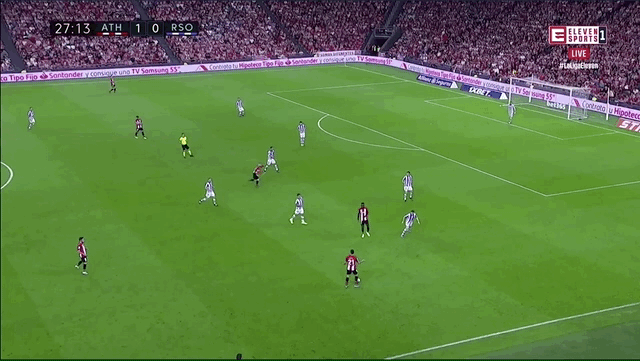 Sancho is comfortable moving into central areas in part because Lancaster, aware that he had an elite talent on his hands, regularly deployed him there. “If he’s in the center, he’s more involved,” he explained. “Not just in terms of touching the ball, but his brain is more involved. Even if he’s not getting the ball to his feet, he’s making decisions: does he shuffle in there, does he move over here, when does he move in there, how does he move in, what could he do better in this situation. He’s got more players around him. That was the idea, to constantly keep him overloaded with decisions.” Now that opponents are becoming cognizant of Sancho’s ability, the fear factor is beginning to play to Dortmund’s advantage. As teams have begun to adjust, to close Sancho down but not necessarily commit to a challenge, so Dortmund have started to utilize the channel inside of him, drawing his marker wide to the touchline and pushing a runner into the resultant space.
Sancho is comfortable moving into central areas in part because Lancaster, aware that he had an elite talent on his hands, regularly deployed him there. “If he’s in the center, he’s more involved,” he explained. “Not just in terms of touching the ball, but his brain is more involved. Even if he’s not getting the ball to his feet, he’s making decisions: does he shuffle in there, does he move over here, when does he move in there, how does he move in, what could he do better in this situation. He’s got more players around him. That was the idea, to constantly keep him overloaded with decisions.” Now that opponents are becoming cognizant of Sancho’s ability, the fear factor is beginning to play to Dortmund’s advantage. As teams have begun to adjust, to close Sancho down but not necessarily commit to a challenge, so Dortmund have started to utilize the channel inside of him, drawing his marker wide to the touchline and pushing a runner into the resultant space. 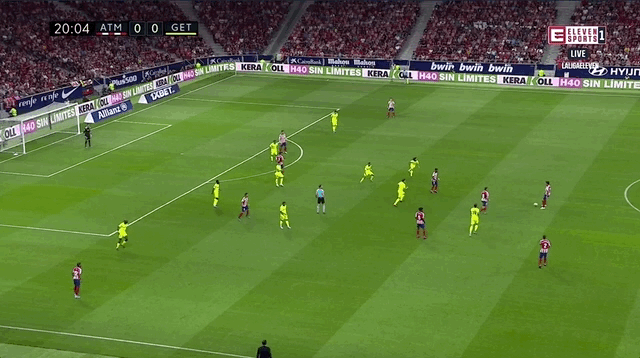 All of this isn’t to say that Sancho is already the finished article. He is, after all, still just 18. “He knows that he still has a lot to improve,” as Dortmund coach Lucien Favre said earlier this season. But he has leveraged his outstanding attributes to become a regular contributor to a team challenging for the Bundesliga title and still hoping to make further progress in the Champions League, where they meet Tottenham Hotspur in the round-of-16. To Lancaster, it is clear that the opportunity to play regular first-team football at Dortmund has been of great benefit to Sancho. “When I watch him now, the way he defends, the way he gets into shape, he’s very disciplined,” he said. “I think watching him at Dortmund, week-in, week-out on the television, he’s unpredictable now. He’ll get the ball and just pop it, one touch. He’ll get the ball, have two touches and then pass it. When he was younger, it was attack, attack, attack, and now when you watch him, he’s calmer, he knows how to restore his energy, to rebuild it, which comes with maturity.” And he doesn’t think his former charge will be overawed by the occasion in the first leg against Spurs at Wembley this Wednesday. “I honestly believe that it doesn’t matter if he’s walking out onto South London recreational pitches with his mates or he’s walking out at Wembley, it’s the same environment for him,” Lancaster explained. “He just wants to play and have fun.” Header image courtesy of the Press Association
All of this isn’t to say that Sancho is already the finished article. He is, after all, still just 18. “He knows that he still has a lot to improve,” as Dortmund coach Lucien Favre said earlier this season. But he has leveraged his outstanding attributes to become a regular contributor to a team challenging for the Bundesliga title and still hoping to make further progress in the Champions League, where they meet Tottenham Hotspur in the round-of-16. To Lancaster, it is clear that the opportunity to play regular first-team football at Dortmund has been of great benefit to Sancho. “When I watch him now, the way he defends, the way he gets into shape, he’s very disciplined,” he said. “I think watching him at Dortmund, week-in, week-out on the television, he’s unpredictable now. He’ll get the ball and just pop it, one touch. He’ll get the ball, have two touches and then pass it. When he was younger, it was attack, attack, attack, and now when you watch him, he’s calmer, he knows how to restore his energy, to rebuild it, which comes with maturity.” And he doesn’t think his former charge will be overawed by the occasion in the first leg against Spurs at Wembley this Wednesday. “I honestly believe that it doesn’t matter if he’s walking out onto South London recreational pitches with his mates or he’s walking out at Wembley, it’s the same environment for him,” Lancaster explained. “He just wants to play and have fun.” Header image courtesy of the Press Association
2019
Jadon Sancho's Youth Coach Explains the Star's Greatest Strengths
By admin
|
February 11, 2019
